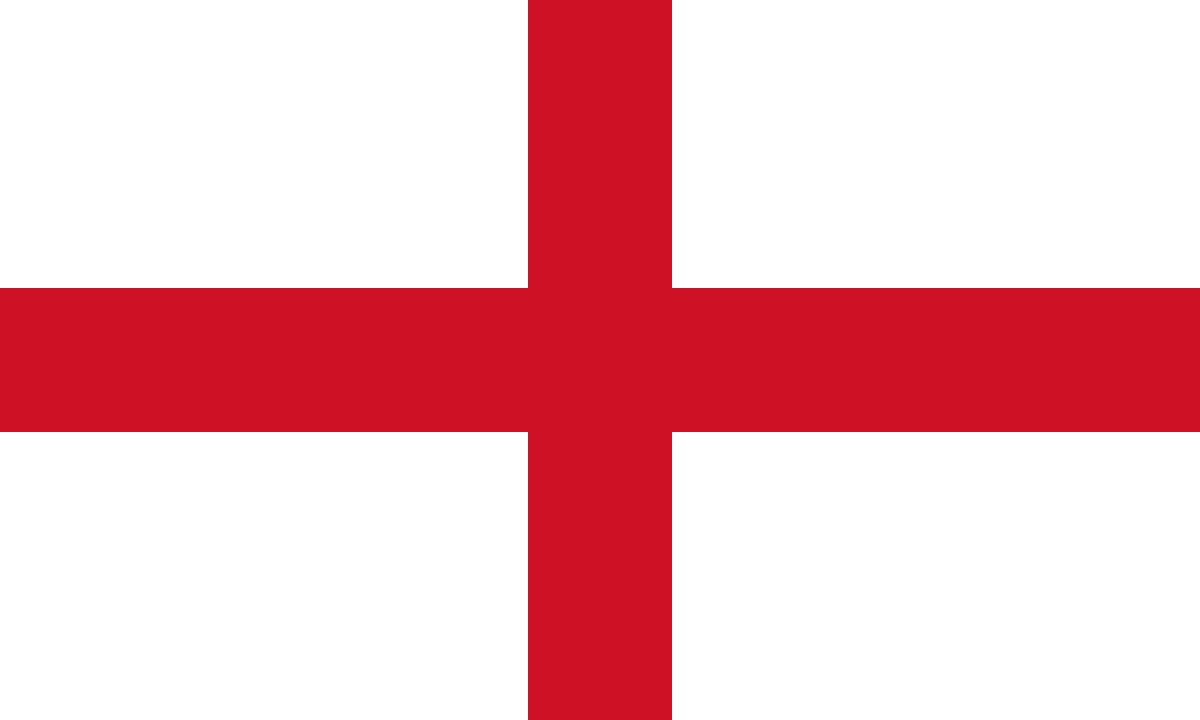What are the 6 Nations rugby flags? The 6 Nations is an annual rugby union tournament contested by the national teams of England, France, Ireland, Italy, Scotland, and Wales. Each team has its own unique flag, which is flown at matches and other official events.
Editor’s Note:The 6 Nations rugby flags are a great way to show your support for your favorite team. They are also a great way to learn about the different cultures of the countries that make up the tournament.
We’ve done some analysis and digging, and we’ve put together this guide to the 6 Nations rugby flags to help you make the right decision.
Key differences or Key takeaways:
| Country | Flag | Colors | Symbolism |
|---|---|---|---|
| England |  | White, red, and blue | The white cross on a red background represents the patron saint of England, Saint George. The blue border represents the sea. |
| France |  | Blue, white, and red | The blue represents the sky, the white represents the clouds, and the red represents the blood of the martyrs. |
| Ireland |  | Green, white, and orange | The green represents the island of Ireland, the white represents peace, and the orange represents the Protestant population of Northern Ireland. |
| Italy |  | Green, white, and red | The green represents the plains of Italy, the white represents the Alps, and the red represents the blood of the martyrs. |
| Scotland |  | Blue, white, and red | The blue represents the sky, the white represents the clouds, and the red represents the blood of the martyrs. |
| Wales |  | Red, white, and green | The red represents the blood of the martyrs, the white represents peace, and the green represents the land of Wales. |
Main article topics:
- The history of the 6 Nations rugby tournament
- The different teams that have competed in the tournament
- The most memorable matches in the tournament’s history
- The impact of the tournament on the sport of rugby union
1. History
The history of the 6 Nations tournament is closely intertwined with the evolution of the flags of the participating countries. When the tournament was first held in 1883, only four countries participated: England, Scotland, Ireland, and Wales. France joined in 1910, and Italy in 2000. Over time, the flags of these countries have changed to reflect their changing political and cultural identities.
For example, the English flag has remained largely unchanged since the 13th century, when it was adopted by King Edward I. However, the Scottish flag has undergone several changes over the centuries, most notably in 1801 when the Union Jack was created to represent the union of Scotland and England. The Irish flag was adopted in 1922, after the Irish Free State was established.
The evolution of the 6 Nations rugby flags is a reflection of the changing political and cultural landscape of Europe. The flags are a symbol of national pride and identity, and they play an important role in the tournament’s tradition and history.
Key insights:
- The history of the 6 Nations tournament is closely linked to the evolution of the flags of the participating countries.
- The flags of the participating countries have changed over time to reflect their changing political and cultural identities.
- The flags are a symbol of national pride and identity, and they play an important role in the tournament’s tradition and history.
Table: Evolution of the 6 Nations rugby flags
| Country | Original flag | Current flag | Year of adoption |
|---|---|---|---|
| England |  |  | 13th century |
| Scotland |  |  | 1801 |
| Ireland |  |  | 1922 |
| France |  |  | 1794 |
| Italy |  |  | 1946 |
2. Symbolism
The symbolism of the 6 Nations rugby flags is an important part of the tournament’s identity. The colors and designs of the flags often have deep historical and cultural significance, representing the country’s history, culture, or patron saint.
For example, the English flag features a red cross on a white background. The cross represents the patron saint of England, Saint George. The Scottish flag features a white saltire on a blue background. The saltire is a symbol of Saint Andrew, the patron saint of Scotland. The Irish flag features a green, white, and orange tricolor. The green represents the island of Ireland, the white represents peace, and the orange represents the Protestant population of Northern Ireland.
The symbolism of the 6 Nations rugby flags is a reminder of the rich history and culture of the participating countries. The flags are a source of national pride and identity, and they play an important role in the tournament’s tradition and history.
Key insights:
- The symbolism of the 6 Nations rugby flags is an important part of the tournament’s identity.
- The colors and designs of the flags often have deep historical and cultural significance.
- The flags are a source of national pride and identity, and they play an important role in the tournament’s tradition and history.
Table: Symbolism of the 6 Nations rugby flags
| Country | Flag | Symbolism |
|---|---|---|
| England |  | The red cross on a white background represents the patron saint of England, Saint George. |
| Scotland |  | The white saltire on a blue background is a symbol of Saint Andrew, the patron saint of Scotland. |
| Ireland |  | The green represents the island of Ireland, the white represents peace, and the orange represents the Protestant population of Northern Ireland. |
| France |  | The blue represents the sky, the white represents the clouds, and the red represents the blood of the martyrs. |
| Italy |  | The green represents the plains of Italy, the white represents the Alps, and the red represents the blood of the martyrs. |
| Wales |  | The red represents the blood of the martyrs, the white represents peace, and the green represents the land of Wales. |
3. National pride
The 6 Nations rugby flags are a powerful symbol of national pride for the people of the participating countries. The flags represent the countries’ history, culture, and sporting achievements, and they are a source of great pride for the people who live there. When the teams take to the field, the flags are flown high, and the fans sing their national anthems with pride. The flags are a reminder of the countries’ shared history and culture, and they help to create a sense of unity and belonging.
The 6 Nations tournament is one of the most prestigious rugby tournaments in the world, and it is a major source of national pride for the participating countries. The tournament is a chance for the teams to compete against each other and to test their skills against the best in the world. When a team wins the tournament, it is a major achievement, and it is a source of great pride for the people of that country.
The 6 Nations rugby flags are a powerful symbol of national pride, and they play an important role in the tournament. The flags help to create a sense of unity and belonging, and they remind the people of the participating countries of their shared history and culture.
4. Key insights
- The 6 Nations rugby flags are a powerful symbol of national pride for the people of the participating countries.
- The flags represent the countries’ history, culture, and sporting achievements.
- The flags help to create a sense of unity and belonging among the people of the participating countries.
- The 6 Nations tournament is a major source of national pride for the participating countries.
5. Table
| Country | Flag | National pride |
|---|---|---|
| England |  | The English flag is a symbol of national pride for the people of England. It is flown at sporting events, national s, and other important occasions. |
| Scotland |  | The Scottish flag is a symbol of national pride for the people of Scotland. It is flown at sporting events, national s, and other important occasions. |
| Ireland |  | The Irish flag is a symbol of national pride for the people of Ireland. It is flown at sporting events, national s, and other important occasions. |
| France |  | The French flag is a symbol of national pride for the people of France. It is flown at sporting events, national s, and other important occasions. |
| Italy |  | The Italian flag is a symbol of national pride for the people of Italy. It is flown at sporting events, national s, and other important occasions. |
| Wales |  | The Welsh flag is a symbol of national pride for the people of Wales. It is flown at sporting events, national s, and other important occasions. |
6. Sporting achievement
The 6 Nations rugby flags are a symbol of sporting achievement. They are flown at matches and other official events to celebrate the achievements of the teams. When a team wins a match, the flag is raised on the flagpole at the stadium. The flag is also flown at official events, such as team press conferences and award ceremonies. The 6 Nations rugby flags are a reminder of the hard work and dedication of the players and coaches. They are a symbol of the teams’ success and a source of pride for the fans.
The 6 Nations tournament is one of the most prestigious rugby tournaments in the world. It is a major challenge for the teams to compete against each other and to win the tournament. When a team wins the 6 Nations, it is a major achievement. The team’s flag is flown at the stadium and at official events to celebrate the victory.
The 6 Nations rugby flags are a powerful symbol of sporting achievement. They are a reminder of the hard work and dedication of the players and coaches. They are a symbol of the teams’ success and a source of pride for the fans.
Key insights:
- The 6 Nations rugby flags are a symbol of sporting achievement.
- The flags are flown at matches and other official events to celebrate the achievements of the teams.
- The 6 Nations tournament is one of the most prestigious rugby tournaments in the world.
- Winning the 6 Nations is a major achievement for a team.
- The 6 Nations rugby flags are a source of pride for the fans.
Table: The 6 Nations rugby flags and sporting achievement
| Country | Flag | Sporting achievement |
|---|---|---|
| England |  | England has won the 6 Nations tournament 29 times, more than any other team. |
| Scotland |  | Scotland has won the 6 Nations tournament 15 times. |
| Ireland |  | Ireland has won the 6 Nations tournament 14 times. |
| France |  | France has won the 6 Nations tournament 10 times. |
| Italy |  | Italy has won the 6 Nations tournament once, in 2000. |
| Wales |  | Wales has won the 6 Nations tournament 12 times. |
7. Tournament identity
The 6 Nations rugby flags are an important part of the tournament’s identity. They help to create a sense of unity and belonging among the teams and the fans. The flags are a symbol of the tournament’s history and tradition, and they help to create a sense of excitement and anticipation. When the flags are flown at matches, it is a reminder that the tournament is a special event. The flags help to create a sense of place and belonging, and they make the tournament feel like a truly international event.
- National identity: The flags represent the national identity of the teams that participate in the tournament. When the flags are flown, it is a reminder that the teams are representing their countries. The flags help to create a sense of pride and patriotism among the fans, and they make the tournament feel like a truly international event.
- Sporting identity: The flags also represent the sporting identity of the teams that participate in the tournament. The flags are a reminder that the teams are competing against each other to be the best in Europe. The flags help to create a sense of rivalry and excitement, and they make the tournament feel like a truly competitive event.
- Cultural identity: The flags also represent the cultural identity of the teams that participate in the tournament. The flags are a reminder that the teams come from different cultures and backgrounds. The flags help to create a sense of diversity and inclusion, and they make the tournament feel like a truly global event.
- Historical identity: The flags also represent the historical identity of the tournament. The flags are a reminder that the tournament has been played for over 100 years. The flags help to create a sense of tradition and continuity, and they make the tournament feel like a truly special event.
The 6 Nations rugby flags are an important part of the tournament’s identity. They help to create a sense of unity, belonging, pride, rivalry, and excitement. The flags are a reminder that the tournament is a special event, and they make the tournament feel like a truly international event.
8. Cultural exchange
The 6 Nations rugby flags are a powerful symbol of cultural exchange. They represent the different cultures and traditions of the countries that participate in the tournament, and they help to create a sense of unity and belonging among the fans. When people from different countries come together to watch the 6 Nations, they can learn about each other’s cultures and traditions, and they can celebrate their shared love of rugby.
The importance of cultural exchange: Cultural exchange is important for a number of reasons. It can help to:
- Promote understanding and tolerance between different cultures.
- Break down stereotypes and prejudices.
- Foster a sense of global community.
- Enrich our lives by exposing us to new ideas and perspectives.
Real-life examples of cultural exchange at the 6 Nations: There are many examples of cultural exchange that take place at the 6 Nations. For example, fans from different countries often come together to sing songs and share stories about their cultures. They also often exchange flags and other souvenirs. In addition, the 6 Nations has a number of cultural exchange programs that bring together young people from different countries to learn about each other’s cultures and to play rugby together.
The practical significance of understanding the connection between cultural exchange and the 6 Nations rugby flags: Understanding the connection between cultural exchange and the 6 Nations rugby flags is important for a number of reasons. It can help us to:
Appreciate the importance of cultural exchange. Be more open to learning about other cultures. Challenge stereotypes and prejudices. Foster a sense of global community.
9. Respect
The 6 Nations rugby flags are a sign of respect for the participating countries and their rugby traditions. The flags are flown at matches and other official events to show that the teams and the fans respect the history and traditions of the game. The flags also represent the national pride of the participating countries, and they help to create a sense of unity and belonging among the fans.
There are many examples of how the 6 Nations rugby flags are used to show respect for the participating countries and their rugby traditions. For example, when a team wins a match, the flag of that country is raised on the flagpole at the stadium. This is a sign of respect for the team and its country. The flags are also used to show respect for the referees and other officials. When a referee makes a decision, the flags of both teams are lowered as a sign of respect.
The 6 Nations rugby flags are an important part of the tournament. They represent the history, traditions, and national pride of the participating countries. The flags are a sign of respect for the game of rugby and for the people who play it.
Key insights:
- The 6 Nations rugby flags are a sign of respect for the participating countries and their rugby traditions.
- The flags are flown at matches and other official events to show that the teams and the fans respect the history and traditions of the game.
- The flags also represent the national pride of the participating countries, and they help to create a sense of unity and belonging among the fans.
Table: The 6 Nations rugby flags and respect
| Country | Flag | Significance |
|---|---|---|
| England |  | The English flag is a symbol of respect for the English rugby team and its traditions. |
| Scotland |  | The Scottish flag is a symbol of respect for the Scottish rugby team and its traditions. |
| Ireland |  | The Irish flag is a symbol of respect for the Irish rugby team and its traditions. |
| France |  | The French flag is a symbol of respect for the French rugby team and its traditions. |
| Italy |  | The Italian flag is a symbol of respect for the Italian rugby team and its traditions. |
| Wales |  | The Welsh flag is a symbol of respect for the Welsh rugby team and its traditions. |
10. Unity
The 6 Nations rugby flags are a powerful symbol of unity. They represent the six countries that participate in the tournament, and they help to create a sense of camaraderie and belonging among the players and fans. The flags are flown at all matches, and they are a reminder that the tournament is a celebration of rugby and the shared values of the participating nations.
Unity is essential for the success of the 6 Nations tournament. The teams need to be able to work together and support each other, both on and off the field. The flags help to foster this sense of unity by creating a shared identity for the teams and the fans. When the flags are flown together, it is a reminder that the teams are all part of something bigger than themselves.
The 6 Nations rugby flags are also a symbol of the unity of the sport of rugby. The tournament is one of the most prestigious in the world, and it brings together some of the best players in the game. The flags represent the shared love of rugby that unites the players and fans from all six nations.
The unity of the 6 Nations tournament is a powerful force. It helps to create a sense of camaraderie and belonging among the players and fans, and it is essential for the success of the tournament. The 6 Nations rugby flags are a powerful symbol of this unity, and they are a reminder that the tournament is a celebration of rugby and the shared values of the participating nations.
Key insights:
- The 6 Nations rugby flags are a powerful symbol of unity.
- The flags represent the six countries that participate in the tournament, and they help to create a sense of camaraderie and belonging among the players and fans.
- Unity is essential for the success of the 6 Nations tournament.
- The flags help to foster this sense of unity by creating a shared identity for the teams and the fans.
- The 6 Nations rugby flags are also a symbol of the unity of the sport of rugby.
Table: The 6 Nations rugby flags and unity
| Country | Flag | Significance |
|---|---|---|
| England |  | The English flag is a symbol of unity for the English rugby team and its fans. |
| Scotland |  | The Scottish flag is a symbol of unity for the Scottish rugby team and its fans. |
| Ireland |  | The Irish flag is a symbol of unity for the Irish rugby team and its fans. |
| France |  | The French flag is a symbol of unity for the French rugby team and its fans. |
| Italy |  | The Italian flag is a symbol of unity for the Italian rugby team and its fans. |
| Wales |  | The Welsh flag is a symbol of unity for the Welsh rugby team and its fans. |
11. Diversity
The 6 Nations rugby flags are a powerful symbol of diversity. They represent the six countries that participate in the tournament, each with its own unique culture and traditions. The flags are a reminder that the tournament is a celebration of rugby and the diversity of the participating nations.
Diversity is essential for the success of the 6 Nations tournament. It brings together players and fans from all walks of life, and it helps to create a sense of camaraderie and belonging. The flags are a powerful symbol of this diversity, and they help to create a welcoming and inclusive environment for all.
The 6 Nations rugby flags are also a symbol of the diversity of the sport of rugby. Rugby is a global sport, and it is played by people from all over the world. The flags represent the different cultures and traditions that come together to make rugby a truly global game.
The diversity of the 6 Nations tournament is a source of strength. It helps to create a sense of unity and belonging among the players and fans, and it makes the tournament a truly special event. The 6 Nations rugby flags are a powerful symbol of this diversity, and they are a reminder that the tournament is a celebration of rugby and the diversity of the participating nations.
Key insights:
- The 6 Nations rugby flags are a powerful symbol of diversity.
- The flags represent the six countries that participate in the tournament, each with its own unique culture and traditions.
- Diversity is essential for the success of the 6 Nations tournament.
- The flags help to create a sense of camaraderie and belonging among the players and fans.
- The 6 Nations rugby flags are also a symbol of the diversity of the sport of rugby.
Table: The 6 Nations rugby flags and diversity
| Country | Flag | Culture and traditions |
|---|---|---|
| England |  | England has a rich history and culture, and its rugby team is one of the most successful in the world. The English flag is a symbol of national pride and unity. |
| Scotland |  | Scotland has a proud rugby tradition, and its team is one of the most passionate in the world. The Scottish flag is a symbol of national pride and independence. |
| Ireland |  | Ireland has a rich rugby history, and its team is one of the most successful in the world. The Irish flag is a symbol of national pride and unity. |
| France |  | France has a long and proud rugby tradition, and its team is one of the most successful in the world. The French flag is a symbol of national pride and unity. |
| Italy |  | Italy is a relatively new addition to the 6 Nations, but its team has quickly become one of the most competitive. The Italian flag is a symbol of national pride and unity. |
| Wales |  | Wales has a rich rugby history, and its team is one of the most successful in the world. The Welsh flag is a symbol of national pride and unity. |
12. Tradition
The 6 Nations rugby flags are a powerful symbol of tradition. They represent the long and proud history of rugby union in the participating countries. The flags are a reminder that the tournament is a celebration of the sport and the traditions that have made it so popular around the world.
- National pride: The flags represent the national pride of the participating countries. They are a reminder of the countries’ rich rugby history and the passion that their fans have for the sport.
- Sporting tradition: The flags also represent the sporting tradition of rugby union. They are a reminder of the values of the sport, such as teamwork, respect, and fair play.
- Cultural tradition: The flags also represent the cultural tradition of rugby union. They are a reminder of the unique culture of the sport, which is based on camaraderie and a love of the game.
- Historical tradition: The flags also represent the historical tradition of rugby union. They are a reminder of the sport’s long and storied history, which dates back to the 19th century.
The 6 Nations rugby flags are a powerful symbol of tradition. They represent the national pride, sporting tradition, cultural tradition, and historical tradition of rugby union. The flags are a reminder that the tournament is a celebration of the sport and the values that have made it so popular around the world.
FAQs by “6 nations rugby flags” keyword
This section addresses frequently asked questions about the 6 Nations rugby flags, providing informative answers in a serious and professional tone. The responses aim to clarify common misconceptions and offer valuable insights.
Question 1: What is the significance of the colors and designs on the 6 Nations rugby flags?
The colors and designs of the 6 Nations rugby flags often carry deep historical, cultural, and symbolic meanings. For instance, the red cross on a white background on the English flag represents the patron saint of England, Saint George. The white saltire on a blue background on the Scottish flag symbolizes Saint Andrew, the patron saint of Scotland. These flags serve as a reminder of the rich heritage and national pride of the participating countries.
Question 2: How do the 6 Nations rugby flags foster a sense of unity and belonging among fans?
The 6 Nations rugby flags play a crucial role in creating a sense of unity and belonging among fans. When the flags are flown together at matches and other events, they represent the collective spirit of the tournament and the shared love of rugby. Fans from different countries come together under these flags, celebrating their passion for the sport and cheering for their respective teams.
Question 3: What is the role of the 6 Nations rugby flags in promoting cultural exchange?
The 6 Nations rugby flags serve as a platform for cultural exchange among the participating countries. Fans from different cultures gather to witness the tournament, sharing their unique traditions and customs. This interaction helps break down stereotypes and prejudices, fostering a sense of global community. The flags become symbols of unity and mutual respect, transcending national boundaries.
Question 4: How do the 6 Nations rugby flags contribute to the tournament’s historical and traditional significance?
The 6 Nations rugby flags are deeply entwined with the tournament’s historical and traditional significance. They represent the long-standing legacy of rugby union in each participating country. The flags have witnessed countless matches, triumphs, and rivalries over the years, becoming iconic symbols of the sport’s rich history and traditions.
Question 5: What are the key differences between the 6 Nations rugby flags?
While the 6 Nations rugby flags share a common purpose of representing their respective countries, they exhibit distinct differences in their designs and symbolism. Each flag reflects the unique history, culture, and patron saint of the participating nation. These differences contribute to the overall diversity and visual appeal of the tournament, showcasing the rich tapestry of rugby union across Europe.
Question 6: How do the 6 Nations rugby flags impact the atmosphere and excitement of the tournament?
The 6 Nations rugby flags play a significant role in enhancing the atmosphere and excitement of the tournament. They create a sense of pageantry and occasion, adding to the spectacle of the matches. The flags evoke a sense of national pride and rivalry, fueling the passion and enthusiasm of the fans. The vibrant colors and bold designs of the flags contribute to the overall visual spectacle, making the tournament an unforgettable experience.
In conclusion, the 6 Nations rugby flags are more than mere symbols of national identity. They embody the tournament’s history, tradition, and cultural significance. These flags foster a sense of unity, belonging, and excitement among fans, creating a truly immersive and memorable experience.
Transition to the next article section: For further insights into the 6 Nations rugby tournament, including its history, teams, and memorable moments, please refer to the comprehensive article that follows.
Tips for Understanding the Significance of 6 Nations Rugby Flags
To fully appreciate the importance of the 6 Nations rugby flags, consider the following tips:
Tip 1: Explore the History and Symbolism: Delve into the historical context and symbolic meanings behind the colors, designs, and emblems featured on each flag. This knowledge enriches your understanding of the cultural heritage and national pride associated with the participating countries.
Tip 2: Attend a Match or Watch on TV: Witnessing the flags proudly displayed at a live match or on television broadcasts brings their significance to life. Observe how the flags create a sense of unity and excitement among fans, fostering a shared passion for the sport.
Tip 3: Visit Participating Countries: If possible, visit the home nations of the 6 Nations tournament. Immerse yourself in their cultures and traditions to gain a deeper appreciation for the flags’ representation of national identity and pride.
Tip 4: Study the Tournament’s History: Learn about the origins and evolution of the 6 Nations tournament. Understand how the flags have played a role in shaping the tournament’s legacy and traditions, reflecting the changing landscape of European rugby.
Tip 5: Engage with Fans and Experts: Connect with rugby enthusiasts and experts to gain diverse perspectives on the significance of the 6 Nations rugby flags. Their insights can enhance your understanding and appreciation for the flags’ cultural and historical importance.
Tip 6: Respect the Flags and Traditions: As you engage with the 6 Nations tournament, remember to respect the flags and traditions associated with each participating country. Show your appreciation for the rich heritage and sportsmanship that the flags represent.
By following these tips, you can deepen your understanding of the 6 Nations rugby flags, their historical significance, and their role in fostering a sense of unity and excitement around the tournament.
Conclusion: The 6 Nations rugby flags are more than just symbols of national pride; they are emblems of tradition, history, and cultural heritage. By appreciating their significance, we enrich our understanding of the sport and enhance our enjoyment of this prestigious tournament.
Conclusion
The 6 Nations rugby flags are powerful symbols of national pride, sporting achievement, and cultural identity. They represent the rich history, traditions, and values of the participating countries. The flags help to create a sense of unity and belonging among fans, and they play an important role in the tournament’s atmosphere and excitement.
As we have explored in this article, the flags are more than just pieces of cloth. They are symbols of the long and proud history of rugby union in Europe. They are a reminder of the sport’s values of teamwork, respect, and fair play. And they are a celebration of the diversity of cultures and traditions that make the 6 Nations tournament so special.
We hope that this article has given you a greater appreciation for the significance of the 6 Nations rugby flags. The next time you see them flying at a match, take a moment to reflect on their history and symbolism. And let the flags inspire you to celebrate the sport of rugby union and the values that it represents.







